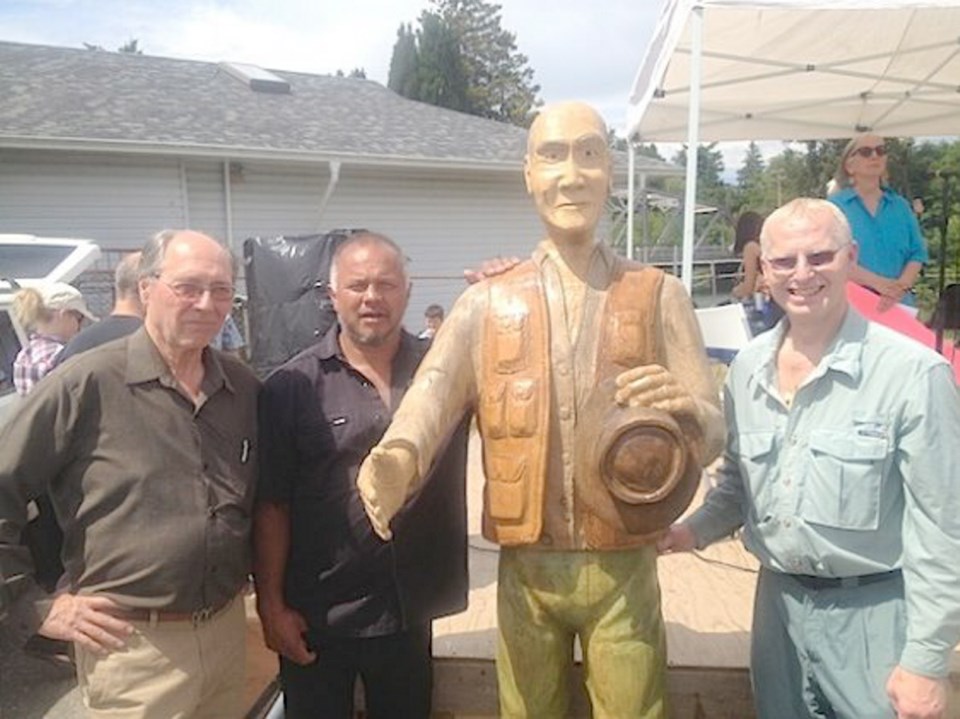CAMPBELL RIVER — Thirty seven years after his death, Roderick Haig-Brown returned to the banks of the Campbell River on Sunday.
The writer and conservationist, whose works of decades ago are still quoted by fisheries scientists and biologists today, was immortalized with a life-size carving by renowned First Nations carver Max Chickite.
The carving was unveiled on the banks of the Campbell River as a large crowd, including five generations of Haig-Brown’s family, looked on.
The carving bears an uncanny resemblance to Haig-Brown, born in England in 1908 but who lived and worked much of his life in his home on the banks of the Campbell River. The home is now a heritage site that draws people from around the world every year.
The carving was supposed to mark the 100th anniversary of Haig-Brown’s birth in 2008, but Chickite became ill and the carving was not completed on time.
It was commissioned by Ken Enns, president of River Sportsman Outdoor Store in Campbell River, a friend of Chickite since childhood. As boys, both cut the lawn of the famous author.
Haig-Brown’s legacy is gigantic in the annals of literature about fishing. The most famous of his more than 20 books — such works as Return to the River and Fisherman’s Fall, Fisherman’s Winter, Fisherman’s Spring and Fisherman’s Summer — are still read and quoted by anglers and conservationists the world over.
Such was Haig-Brown’s influence that the provincial government named a park after him: Roderick Haig-Brown Provincial Park on the Adams River near Kamloops, which helps preserve the watershed’s awe-inspiring sockeye returns.
The carving will be housed in the conservation corner of the River Sportsman store, which also made a $10,000 donation to the Haig-Brown Institute.



